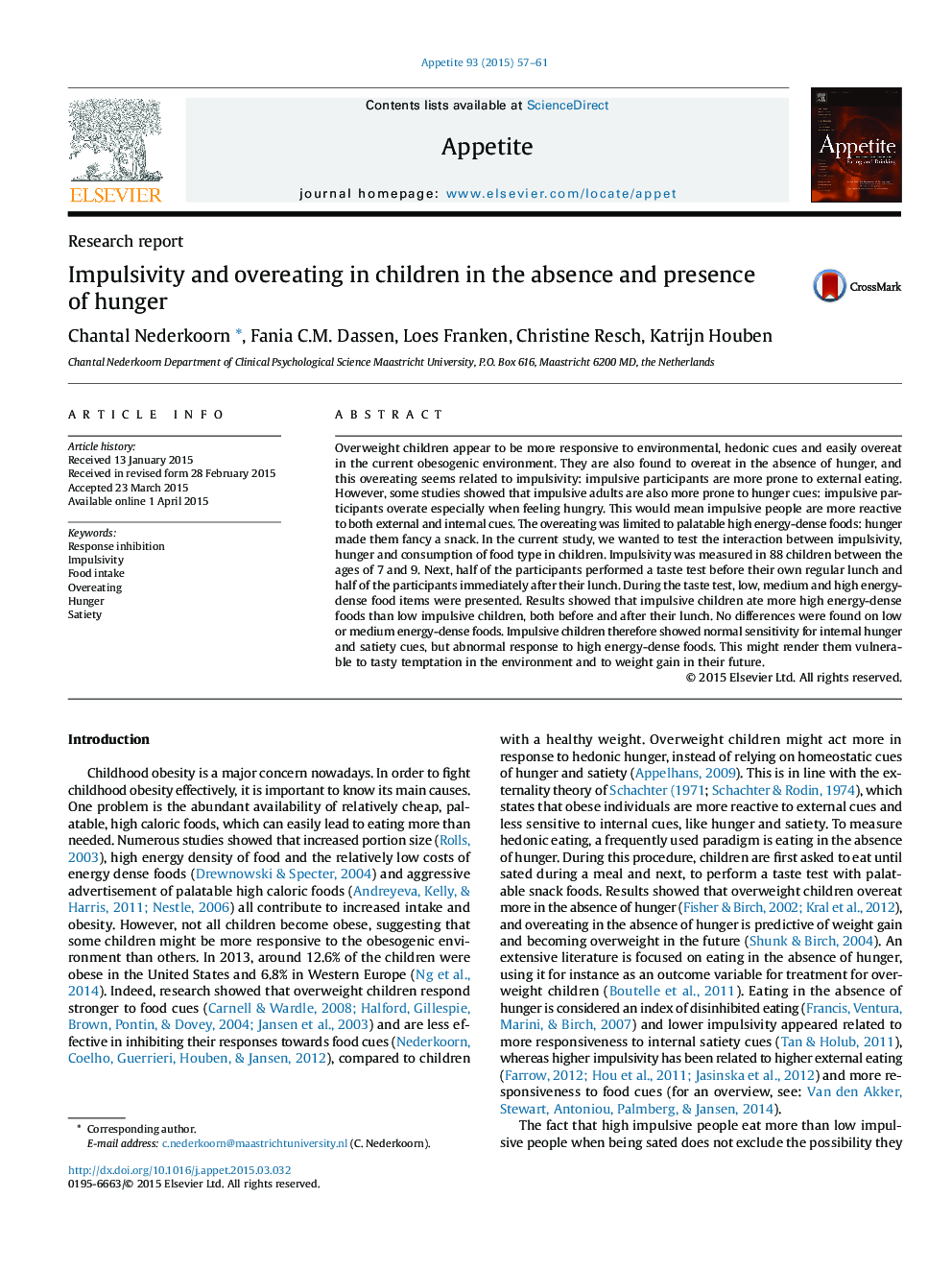| کد مقاله | کد نشریه | سال انتشار | مقاله انگلیسی | نسخه تمام متن |
|---|---|---|---|---|
| 939388 | 1475387 | 2015 | 5 صفحه PDF | دانلود رایگان |
• Response inhibition was measured in children (7–9 years).
• Next they performed an ad lib taste test, either in the absence or presence of hunger.
• No interaction between impulsivity and hunger was found.
• Highly impulsive children ate more high caloric foods in both conditions.
• They ate only more of high energy-dense foods.
Overweight children appear to be more responsive to environmental, hedonic cues and easily overeat in the current obesogenic environment. They are also found to overeat in the absence of hunger, and this overeating seems related to impulsivity: impulsive participants are more prone to external eating. However, some studies showed that impulsive adults are also more prone to hunger cues: impulsive participants overate especially when feeling hungry. This would mean impulsive people are more reactive to both external and internal cues. The overeating was limited to palatable high energy-dense foods: hunger made them fancy a snack. In the current study, we wanted to test the interaction between impulsivity, hunger and consumption of food type in children. Impulsivity was measured in 88 children between the ages of 7 and 9. Next, half of the participants performed a taste test before their own regular lunch and half of the participants immediately after their lunch. During the taste test, low, medium and high energy-dense food items were presented. Results showed that impulsive children ate more high energy-dense foods than low impulsive children, both before and after their lunch. No differences were found on low or medium energy-dense foods. Impulsive children therefore showed normal sensitivity for internal hunger and satiety cues, but abnormal response to high energy-dense foods. This might render them vulnerable to tasty temptation in the environment and to weight gain in their future.
Journal: Appetite - Volume 93, 1 October 2015, Pages 57–61
